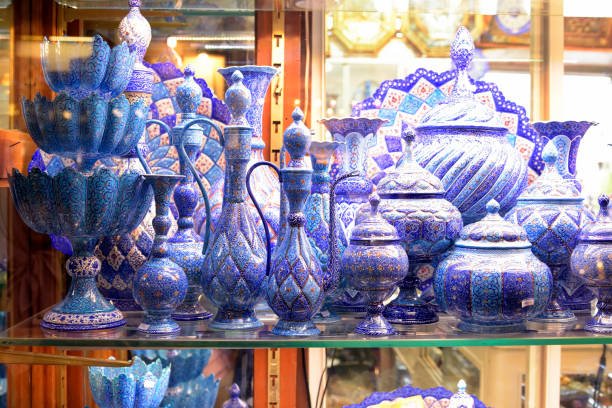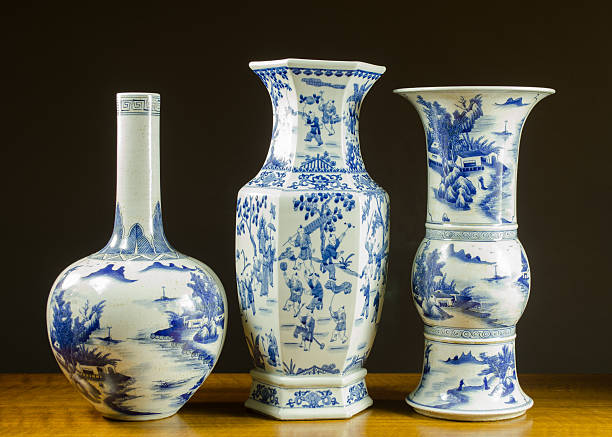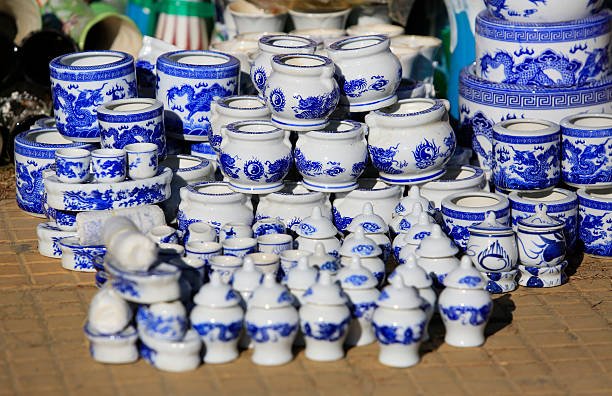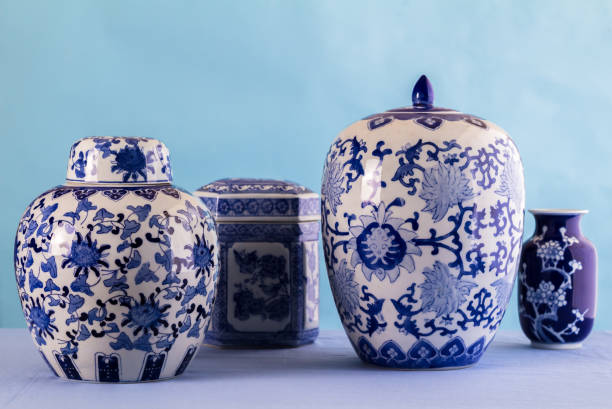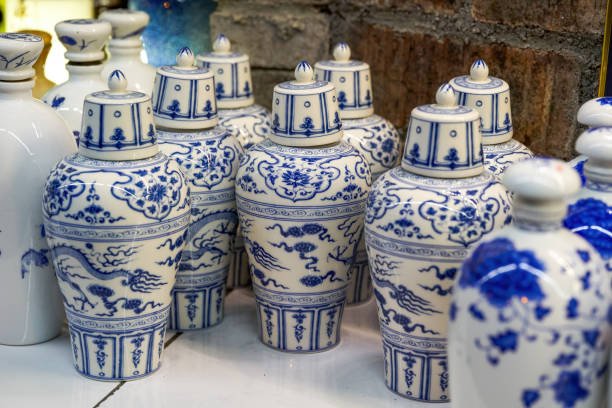Porcelain and Prints
In fact, you can travel through any upper-class home furnishings shop today and find ginger jars. Their dazzling blue-and-white designs, which convey not only functionality but the brilliant colors of living history, have a strong sense of purpose and atmosphere. It would be hard to deny their elegance whether placed on a mantelpiece or used to provide a shot of colour say from side window. But what is it in these arresting blue and white patterns which seems to strike a cord with so many people?

Now, let’s step back in time to when this seductive design all began. This all started in China, during the Tang Dynasty, when Persian cobalt ores met Chinese white clay. Their mingling bore a style that was deeply sewn into the annals of history.Scroll forward to the Ming Dynasty–at that time, Jingdezhen porcelain was beginning to catch on in a big way. With this new material fetching ever increasing sums of money and exciting interest across oceans, it became clear that history had been made.
Picture a bustling European marketplace sometime in the 17th century. Tradesmen eagerly awaited for delicate porcelain packed in crates from China. But admiration was not enough; they soon desired to make or imitate these new exotics, and this gave rise to Delftware in the Netherlands. The Dutch just couldn’t have enough of it. To meet their demand, they began making our earthenware–embellished with the peculiar lowland flora now traditional to Holland and also some Eastern elements. These pieces became local celebrities, bringing blue and white happiness into every dining-room and drawing- room.
After crossing the English Channel, British hands next grasped at the potter’s wheel. Bits of English society and the pastoral landscape graced plates and teapots. Staffordshire potters developed their following takes on Chinese motifs using the transfer printing technique. People joked that if you had enough china from Staffordshire, you could eat off an English garden!
America couldn’t ignore it, of all places. It too clutched its piece of the blue and white pie, stamped with a touch of revolutionary air. The Willow pattern–laden with romance and folk-lore–became a household standard. And who could resist our story-telling charm, a tale of star-crossed lovers fleeing from an ogre? You may have heard of it before; if not, your grandma probably has a piece shoved away.
These patterns are more than just useful. They symbolize civilization migration, mixture, and fusion. Their beauty lies also in their narratives. One story for countless dinner parties, Sunday teas, and even some careless children who–ouch–knock them down by accident.
Why do we love them so much? Perhaps a lot about blue and white will never go out of fashion. They impress through their capacity for being both courageous and unobtrusive, timeless yet still relevant. Whether residing in a delicious piece of chinoiserie wallpaper or accenting a minimalist Scandinavian Style, they adapt to all kinds of settings with an effortless ease. Crafty devils, aren’t they?
Icons Changing the Course of History
When you think about designs that have stood out in history, all kinds of things come popping up at once–some more curious than others. Take ginger jars, for example! They have these ornate designs on them, intricate and fashionable looking. Originally intended for storage of valuable spices and oils, they’ve been timeless icons in home decor ever since! But let’s not halt with this; history has been jumbled up by numerous creations which defy the norm and arouse the mind.
Imagine this: It was the 1920s, and radios were the latest in high technology. One inventor dreamed of a radio not as something to listen to, but rather as a talking clock. With the Chrontophone, this weird idea became reality. It combined a clock and radio for the first time ever, altering how people start their day. It was odd and offbeat, but it fitted snugly into the roaring twenties, the outlandish decade.
On the other hand, if you wander into the world of typography, you may stumble across Helvetica. Yes, a typeface. And yet this is no ordinary type–it’s like the little black dress of fonts, simple but groundbreaking. Invented in 1957 by Swiss typeface designer Max Miedinger, Helvetica stripped away the frills of earlier fonts. It provided clean lines for reading on printed paper that forever changed the way people looked at and read print. Apple, American Airlines and even the New York City Subway have all toyed with its allure. Tiptoeing subtly into our lives, Helvetica remains a tribute to the power of simplicity.
Next, there’s the modular sofa: once the brainchild of a visionary designer who wanted to shatter the traditional furniture mold into myriad fragments. The idea itself was revolutionary-an easily adaptable social furniture sofa, at a time when society was used to rigid Victorian straight-backed seating.
Then comes Tupperware, which revolutionises your daily life without ever catching on as a fashion trend. In the 1940s, Earl Tupper had a flash of brilliance: create plastic containers which will lock in freshness. Simple now but cutting-edge in those times. Later they became an unshakeable part of the domestic kitchen scene, and their arrival always spelled relief from spoilage.
Now if we look at clothing, one certainly can’t overlook the radical appearance of the miniskirt. Initiated by Mary Quant in the swinging sixties, it was not just fashion but a revolution in fabric. A call to order by young people, a scream for liberation in dress, a dissent sewn in trust.
Shifting from the catwalk to the parking lot, it’s time to consider Volkswagen’s Beetle. Originally conceived as a people’s car to get everyone out on the road, it became a cultural icon of sorts. From flower power in the sixties to the Herbie movies of later years, the Beetle was an example of freedom and motion. It was plain yet somehow loveable-that oddball on wheels.
Talking unusual, let’s take a moment for the Dyson vacuum cleaner. A creation not borne from idle thought. Endless prototypes eventually brought forth the cyclone technology when every other vacuum underperformed. The absence of a bag in these cleaners was a godsend, akin to finding socks on a chilly morning.
